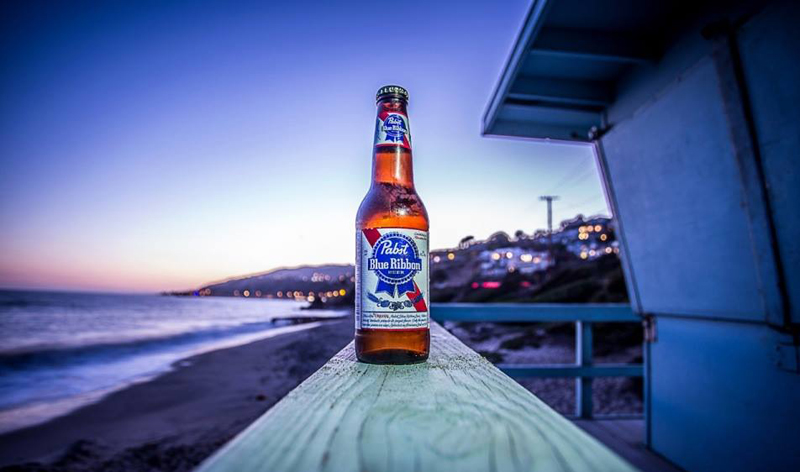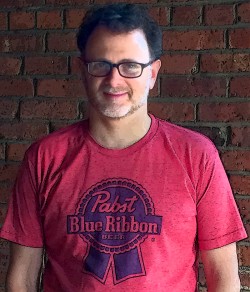Pull Up A Stool With Eugene Kashper
of Pabst Brewing Co.

Eugene Kashper bought Pabst Brewing Co. in 2014 but has no plans to change Pabst Blue Ribbon. (Photo courtesy Pabst Brewing Co.)
Headlines (including in this magazine) spoke of a Russian company purchasing the iconic American Pabst Brewing Co. when Eugene Kashper bought the brewery in 2014. While born in the Soviet Union, Kashper and his family immigrated to the U.S. as political refugees when he was 6 years old, and he later became an American citizen. His younger years were spent in New Jersey, where Pabst had a brewery and other heritage brands loomed in the general consciousness. After two decades in the beer industry, he’s now the head of the largest American-owned brewery in the world (it also owns brands like Ballantine, National Bohemian, Rainier and Lone Star) and reflects on Pabst’s storied past and promising future.
All About Beer: A large part of your brewing industry experience was spent overseas before the Pabst purchase last year. How did you get started, and what were you doing?
Eugene Kashper: I’ve been importing, distributing and brewing beer for the last 21 years. After college I worked in consulting at Ernst & Young and transferred from New York to the firm’s Moscow office. My family came to the States when I was 6, so I grew up speaking English and Russian. Once I got to Moscow, I found out that the Stroh Brewery was looking for someone to represent them in Eastern European markets, so I got a job selling some of the brands Pabst owns today. I had a lot of success with Schlitz malt liquor—the bull—and within a year I decided to partner with a small local importer. In addition to the Stroh brands, we also started exclusively importing brands like Heineken, Corona and others in a number of Eastern European markets. Besides importing, I also created a large brewing company before moving back to New York City in 2002. Since then I have been looking for the right opportunity here in the U.S. I first looked at Pabst in 2010 when the non-profit foundation was selling it—just wasn’t ready at that time. But when Pabst came on the market in 2014, the timing was right, and I knew it was the opportunity of a lifetime. I partnered with TSG, and we got the deal done.
Pabst has been many things during its existence, from the early days of the Blue Ribbon to its current popularity as a hipster or retro beer. It seems to have fans even among hard-core so-called beer geeks. What’s the future of the brand?
We’re the largest American-owned brewer in the world and the go-to sessionable lager for craft consumers—that’s a unique position to be in. Pabst is an unpretentious brand with a great reputation as a true American original. Those qualities speak to people of all generations, especially to millennials. Over the last 10-15 years the brand has really gained steam and has been the fastest-growing domestic beer. We’re not going to change Pabst Blue Ribbon. PBR is a classic, easy-drinking American lager. At the same time we have plenty of archival material and other Pabst recipes, pre-Prohibition recipes—Old Tankard Ale, Andeker and other authentic brands and products that were produced by Pabst over the years that we can certainly add to our portfolio.
Last year you rolled out Ballantine IPA, and that seems to have been met with some measure of success. How many other brands do you own, and can consumers expect other wayside brands to make a return to the market?
We own 77 brands, and 50 of them are dormant. We have a virtual monopoly on American heritage brands. There are a few exceptions, but pretty much they are all ours. People really love these brands. We believe these brands can return to their former glory as long as we make the beer right, don’t cut corners and invest in the brands to make sure we tell our story properly. Our local legends portfolio has brands in every region of the country that people are incredibly passionate about because of their history and credibility. We just need to give these brands the love they deserve.
Much of the beer produced by your company is done at MillerCoors facilities, with some smaller operations also contributing to barrelage. Any plans for this to change?
We’re planning to build our own small breweries to serve as test kitchens and to have the flexibility to make interesting craft styles. So with Ballantine specifically, we’d like to do that in Newark [New Jersey], where the company was founded. In Milwaukee we have a few sites we’re selecting from for Pabst and should have one soon. We’re also trying to do something similar with National Bohemian in Baltimore and Rainier in Seattle. So with a number of our brands, we’ll be working to create some craft brewing capacity. We want to make growlers and bombers of interesting styles. It’ll be a chance for consumers to come and see in person what these brands are all about and to learn about how great beer is made. If it goes well, we could expand this program to many major cities.
This interview was conducted and edited by John Holl.
Go to the next page to learn more about Eugene Kashper.
John Holl
John is the editor of All About Beer Magazine and the author of three books, including The American Craft Beer Cookbook. Find him on Twitter @John_Holl.


Bring back the WHAT’LL HAVE singing commercial, and Andeker
Bring it back home with the commercial, and Andeker.
Bring a brewery to Toledo Ohio. This town is wanting craft beer and more industry.
I’m a sydney sider from Australia , I worship this beer ‘if only we could make anything like pabst , but we don’t ‘ I think this guy has pabst & all it’s rich history at heart , we couldn’t ask for a better guy to keep pabst a true American legend , pleasssse just keep bringing it out here … we love it & live it
Please, Please, Pretty Please,
Make the Ballantine IPA a year-round offering.
Thanx, Brian C.
Start with Andeker, It was Pabst’s premium and has been gone way too long. Market the hell out of it and it will sell like hot cakes. Great marketing, Great beer, Great history!!
What else could you ask for.
Thank You,
I would like to thank you for your recent label on the can of Pabst for giving back to musicians in need. A truly important thing. I love your beer.